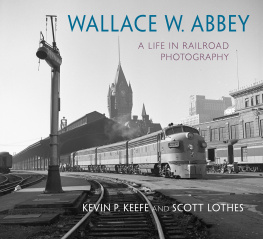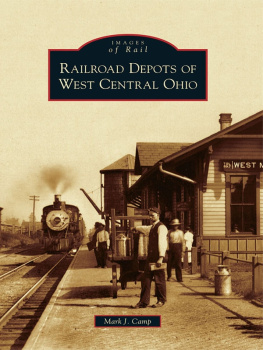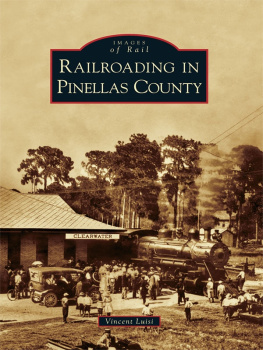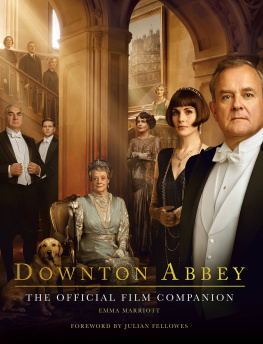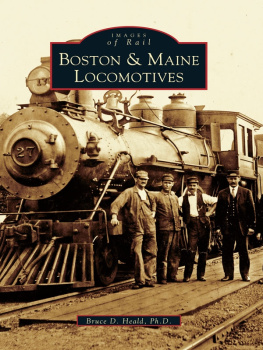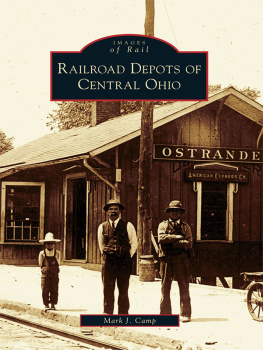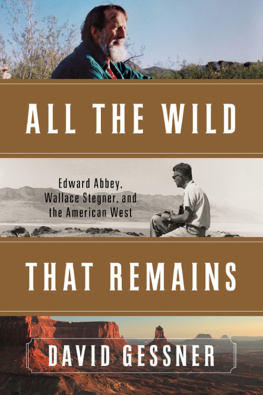
WALLACE W. ABBEY
WALLACE W. ABBEY
A LIFE IN RAILROAD PHOTOGRAPHY
KEVIN P. KEEFE AND SCOTT LOTHES
PHOTOGRAPHS BY WALLACE W. ABBEY
RAILROADS PAST & PRESENT
GEORGE M. SMERK & H. ROGER GRANT, EDITORS
INDIANA UNIVERSITY PRESS
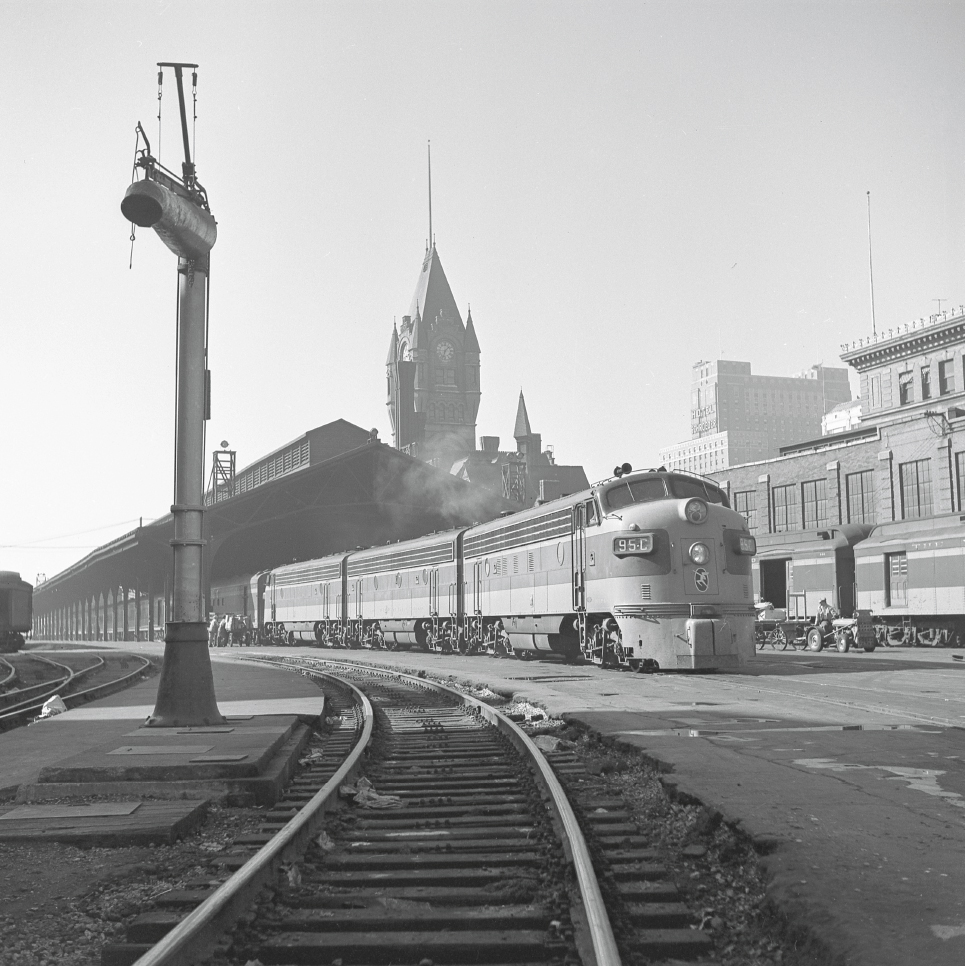
This book is a publication of
Indiana University Press
Office of Scholarly Publishing
Herman B Wells Library 350
1320 East 10th Street
Bloomington, Indiana 47405 USA
iupress.indiana.edu
2018 by Center for Railroad Photography and Art
All rights reserved
No part of this book may be reproduced or utilized in any form or by any means, electronic or mechanical, including photocopying and recording, or by any information storage and retrieval system, without permission in writing from the publisher.
The paper used in this publication meets the minimum requirements of the American National Standard for Information SciencesPermanence of Paper for Printed Library Materials, ANSI Z39.481992.
Manufactured in the United States of America
Cataloging information is available from the Library of Congress.
978-0-253-03224-9 (cloth)
978-0-253-03225-6 (ebook)
1 2 3 4 5 23 22 21 20 19 18
Contents

WALLACE W. ABBEY

Viewed through a doorway leading to the Track 4 platform at Cincinnati Union Terminal, a redcap hurries a handcart loaded with suitcases toward New York Centrals James Whitcomb Riley as passengers hustle to board the Chicago-bound streamliner. Making just a handful of stops en route, the Riley had the fastest schedule of NYCs several trains between Cincinnati and Chicago, covering the 300 miles in just five and a half hours. For its strong composition and great human interest, Trains magazine selected this photograph among its 100 Greatest Railroad Photos in 2008.
INTRODUCTION
THE IMAGE IS AT ONCE PROSAIC AND DEEPLY MYSTERIOUS. THE photographer has placed you in the portal of a doorway leading to the Track 4 platform at Cincinnati Union Terminal. Before you is a scene of urgency and commotion. Passengers scramble to board the westbound James Whitcomb Riley, the New York Centrals morning streamliner to Chicago, and a redcap hurries with a handcart loaded with suitcases. It is 1952, still the high tide of the American passenger train, and everything you see is commonplace.
And yet, in this tiny moment, the photographer has created something magical. Light shimmers over the top of the train, almost blindingly, overexposed in order to bring out detail in the foreground, a ghostly proscenium arch for the stage below. The redcap appears to glance at the photographer, but only for an instant, his uniformed body creating a slight blur. Just beyond him, an elegantly dressed woman also turns to the camera, almost hauntingly.
The image is a masterpiece, and just one of tens of thousands created by Wallace W. Abbey III, an influential force in the world of railroad photography. From the late 1940s onward, Wally Abbey created a body of work that is a rare combination of journalistic and artistic vision. His success was the product of a diverse career that took him from newspaper newsrooms to magazine editorial offices to the corporate suites of major railroad companies, seasoned with countless experiences in locomotive cabs, cabooses, and junction towers. A camera was with him almost every step of the way.
Abbeys ascendance as a photographer coincided with the rise of the first golden age of railroad photography, a genre driven in part by railroad enthusiast magazines and the emergence of several gifted practitioners. Together they revolutionized a durable old hobby, veering from traditional and often static train pictures to deeper, more meaningful portrayals of the entire railroad environment.
In the most fertile period of his photography, the late 1940s through the 1960s, Wally Abbeys work was comparable to that of any of the emerging new talents. His composition was imaginative, sometimes even daring. He had mastered the photographic technology of the moment. He knew railroad operations and technology cold. Most of all, he had the instincts of a skilled journalist, and the necessary reflexes to react.
FROM EVANSTON TO KANSAS
Wally Abbey was born October 30, 1927, in Evanston, a leafy old suburb along Lake Michigan on the north edge of Chicago, and also the home of Northwestern University. His parents were Wallace William Abbey II, a career newspaperman with the Chicago Tribune, and Margaret Peal Squier Abbey, herself an occasional editor and writer. The young Wally spent his entire childhood and youth there, graduating from Evanston Township High School in 1945.
Abbey wrote warmly of his Evanston roots, recalling Fourth of July parades, swimming in Lake Michigan (no further than the nearest sandbar), Sundays at Northminster Presbyterian Church, and, of course, frequent visits to the Chicago & North Western Railway depot on Davis Street. By the time I got to high school, Id developed interests in three areas far removed from more conventional pursuits: certain off-brands of music [Abbey loved old-time country and Western swing], photography, and railroadsparticularly railroads.
Abbeys attachment to trains was forged in the 1930s during family trips to Falls City, Nebraska, his fathers hometown, and Cherryvale, Kansas, where his mother grew up. In fact, one specific incident when he was four or five was a catalyst. Id always been told that when I was a very little child, I disappeared one day while we were visiting in WaKeeney, Kansas, and I was found at the Union Pacific depot. Abbeys frightened parents notwithstanding, he was probably having a fine time.
Although Abbeys father was not especially interested in railroads, trains were a ubiquitous presence in most peoples lives, and his father was knowledgeable. Dad couldnt be called a card-carrying railfan by any means, Abbey recalled, but I know that I developed some of my interest from him. Almost every summer we used to drive west to Falls City, using U.S. 34 across most of southern Iowa. In those days the highway wandered back and forth across the railroad many times, and each time Dad would say Once again we cross the main line of the Burlington!
Years later, on a vacation with his grandmother, Abbey rode the Pennsylvania Railroads General to Philadelphia. He was mesmerized to learn about one of the Pennsylvanias great rituals. I remember the ticket agent making a point of telling me that in the middle of the night, at Paoli, the steam locomotive would be taken off and an electric locomotive put on. Next morning, in the wee hours, Abbey almost certainly raised the window shade on his lower berth to see.
Abbeys most resonant childhood railroad experiences came in Cherryvale, home of his maternal grandparents, Samuel Webner Squier and his wife, Luella Russell Squier. Located in the southeast part of Kansas, Cherryvale sat astride the Tulsa Subdivision of the Atchison, Topeka & Santa Fe, the railroad Abbey later claimed as his favorite. It wasnt Santa Fes principal main line, but the Tulsa Sub offered plenty of diversions, including two trains Abbey often rode, the
Next page
